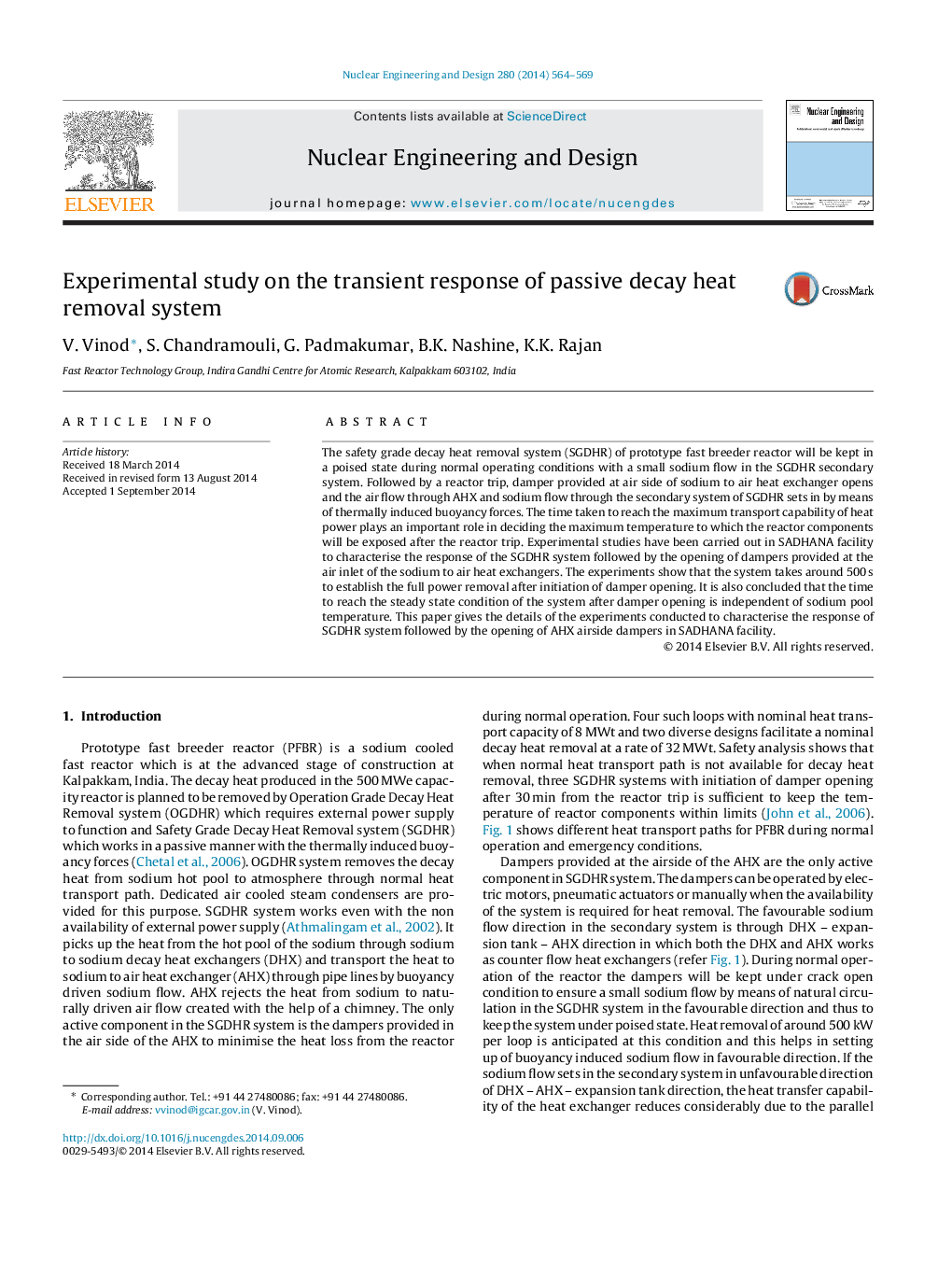| کد مقاله | کد نشریه | سال انتشار | مقاله انگلیسی | نسخه تمام متن |
|---|---|---|---|---|
| 296279 | 511718 | 2014 | 6 صفحه PDF | دانلود رایگان |
The safety grade decay heat removal system (SGDHR) of prototype fast breeder reactor will be kept in a poised state during normal operating conditions with a small sodium flow in the SGDHR secondary system. Followed by a reactor trip, damper provided at air side of sodium to air heat exchanger opens and the air flow through AHX and sodium flow through the secondary system of SGDHR sets in by means of thermally induced buoyancy forces. The time taken to reach the maximum transport capability of heat power plays an important role in deciding the maximum temperature to which the reactor components will be exposed after the reactor trip. Experimental studies have been carried out in SADHANA facility to characterise the response of the SGDHR system followed by the opening of dampers provided at the air inlet of the sodium to air heat exchangers. The experiments show that the system takes around 500 s to establish the full power removal after initiation of damper opening. It is also concluded that the time to reach the steady state condition of the system after damper opening is independent of sodium pool temperature. This paper gives the details of the experiments conducted to characterise the response of SGDHR system followed by the opening of AHX airside dampers in SADHANA facility.
Journal: Nuclear Engineering and Design - Volume 280, December 2014, Pages 564–569
